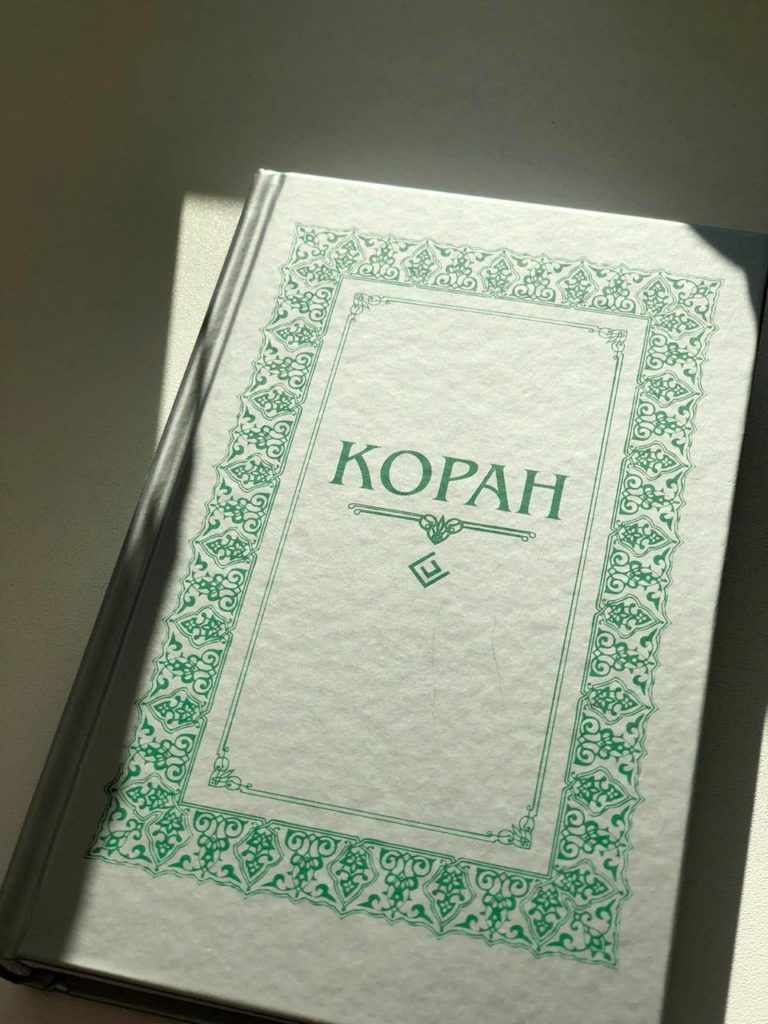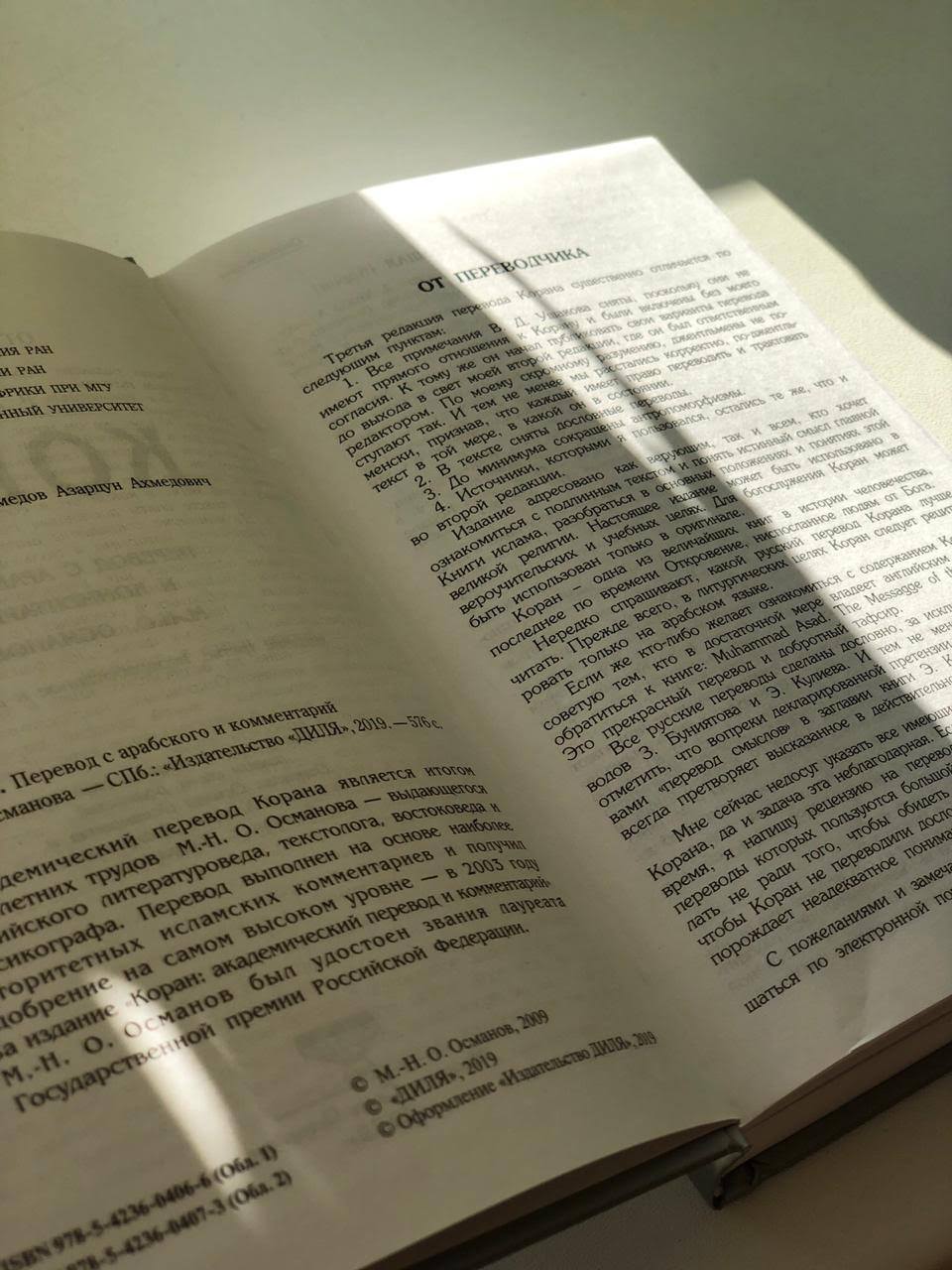What should the criteria be for someone aiming to translate the Qur’an? The debates around these issues surrounded the Qur’anic translation of Dr. Magomed-Nuri Osmanov (1924-2015), a Dagestani philologist and specialist in Oriental languages. Osmanov’s work represents a continuation of the Russian academic tradition of making Muslim scripture accessible for the vast Russian-speaking audience. Despite his main specialization in Persian language and literature, Osmanov was also fluent in Arabic and was able to produce an accessible and popular translation that witnessed 3 editions (1995/1999/2007). As a translator, Osmanov combined two influential features. On the one hand, as a graduate of Moscow State University (MSU), he was in line with the Soviet school of Orientalism. On the other hand, his Muslim name and Dagestani origin added some additional weight to his authority. These factors influenced the popularity of his work when it was first published.
The translation’s reception nevertheless soon met controversy. While it was popular among the general public, positively acknowledged by Russian academic circles and even led Osmanov to be awarded the Russian Federation National Award in 2002, it was also harshly criticized by influential religious authorities (Spiritual Administration of Muslims of Dagestan, SAMD) in Osmanov’s native region of Dagestan. SAMD criticized Osmanov as not having sufficient traditional education, strengthening the binary of authentic Islamic learning vs. academic learning and fixed the controversy in the discourse of laymen Muslims of Russia for many years after.
Some prominent representatives of SAMD further criticized not only the particular translator’s interpretive choices that contradicted the doctrinal vision of SAMD, but listed multiple criteria for anyone who would dare to translate the Qur’an. The criteria went far beyond just knowledge of Arabic and related linguistic sciences, but included such qualities as “proper” aqīda, piety, knowledge of the natural sciences, divinely-inspired knowledge (ʿilm ladunī) and others. Consequentially, if embraced, this demanding approach disqualified not only all previous attempts, but also discouraged further translators from even trying for many years if they wish to be in conformity with SAMD. While Osmanov objected to these critiques, his third edition nevertheless acquired significant changes in light of these tensions. Osmanov partially tried to resolve the anthropomorphic depictions of God, as he explained in the preface, “to their minimum.”
Osmanov perceived his work as a continuation of the achievements of his academic predecessors, something apparent from the frequent references in the footnotes to I. Krachkovsky (1883-1951) and his commentaries. The Russian and Soviet Arabist Krachkovsky was an important source for Osmanov’s own work. However, what distinguishes Osmanov significantly is the fact that he engaged with a vast range of religious sources. Significantly, Osmanov did not focus on one specific branch of Muslim traditions, such as Sunni or Shia, but involved a “multidimensional” approach that surpassed various theological ramifications. He also used tafasīrs of both Arabic and Persian, classical and modern, as well as various European languages’ translations. In one footnote there can be found a mixture of classical Sunni works and those representing so-called Modernist trend. For instance, Osmanov refers often to the tafsīrs of al-Bayḍawī, Abū Ḥayyān al-Andalusī, and al-Jalālayn, but at the same time Rashīd Riḍā’s al-Manār and Muhammad Asad’s translation also make frequent appearances. Among the variety of sources which Osmanov consulted are Shia (Imāmī) and even Ahmadi-Qadyani (omitted in the third edition) works, making his usage of sources a total of forty-seven.
It is possible to notice the gradual shift in Osmanov’s translational objectives. The second edition of his translation was purported as an attempt to fill the gap in science and to create “the most complete and accurate recreation of the Arabic original text” in Russian, making the translation useful for both academics and the general public interested in Islam. The third edition acquires a more confessional tone, where the translator states at first that the work “is addressed to believers” and only then to anyone else interested in Islam. He also added a cautionary note about Muslim rituals’ requirement to use Arabic and not a translation. Furthermore, Osmanov mentioned his critical attitude towards various existing translations leading to an “inadequate understanding”. The confessional tone also can be seen through the usage of the abbreviation after Prophet Muhammad “dbA” (дбА), similar to “Peace and blessings be upon him.”
Nevertheless, while Osmanov states that his translation aims to reach a religious audience, it is significant that he did not see it as problematic to refer to and cite sources contesting the authenticity of some Qur’anic verses. One example is the issue of jizya (9:29) in relation to the People of the Book, regarded by some 19th century Western academics, such as Paul Casanova (1861-1926), as “later interpolations.”
While Osmanov’s uses square brackets throughout the text to make the translation clear and unambiguous to his readership, the sources for these interpolations, however, are not always clarified. For some mutashābihāt āyāt such as istawā, he offers a wide range of opinions without giving a particular preference, thus leaving it to the reader to decide without taking a role of ‘explicit religious authority.’ Among the various features of translator’s choices is Osmanov’s interchangeable usage of Allah/Bog (Бог, the Russian equivalent of God) throughout the text, which apparently was not seen as problematic compared with other translators.
While his language is simple and easy to read, Osmanov still utilized some archaic and Church Slavonic words, such as lud, dlan, slovesa, perhaps to add elevated appeal in some places. Sometimes his choices are very far from the established conventional variations in the Russian language such as tvorit’ molitvu (aqīmu al-salat) or vozdvigali dlya nih poslannikov (arsalnā ilayhim rusulā).
Osmanov did not see his work as complete and was working on the fourth edition of his translation. Moreover, he planned to write reviews on the existing translations of the Qur’an in Russian, which would be notable materials, given his multidimensional approach to what he called “authoritative” sources. However, in August 2015, Osmanov passed away in Dagestan at the age of ninety-one, with plans not coming to fruition and his personal archive still needs additional study. It is significant to see his translation not only as an important intellectual contribution in its own right, but as also as a piece of a puzzle for understanding the dynamics of Russian polemical discourse over Qur’anic translations.
Elvira Kulieva


